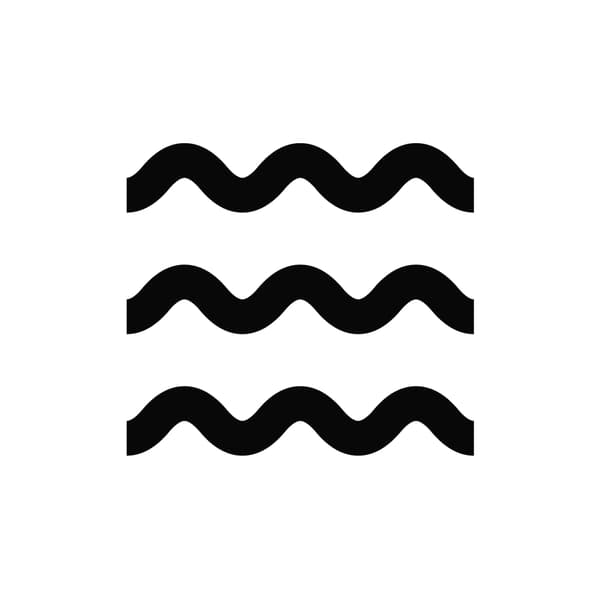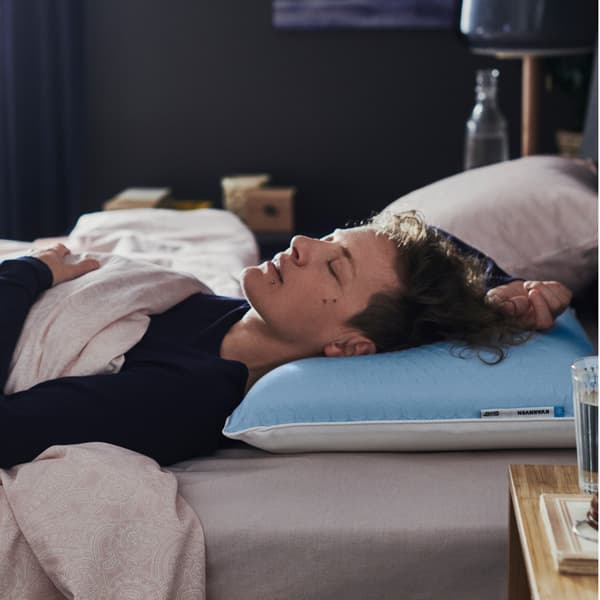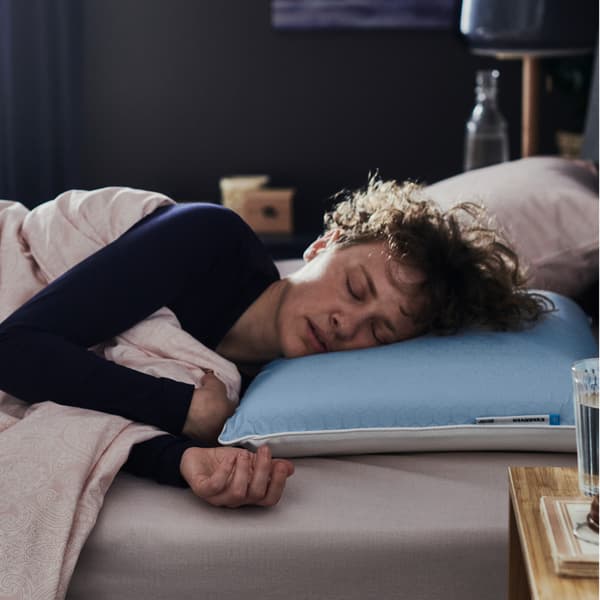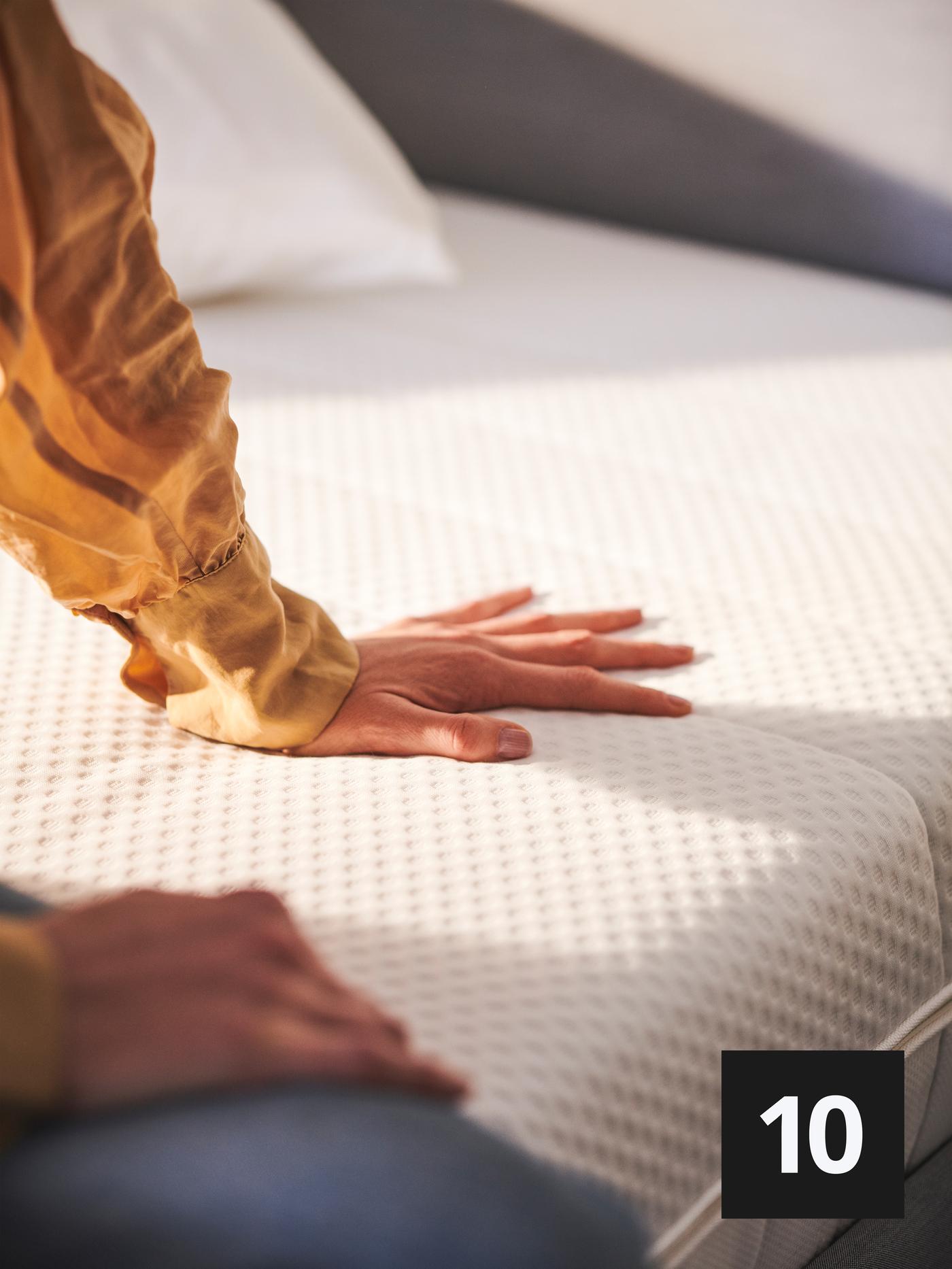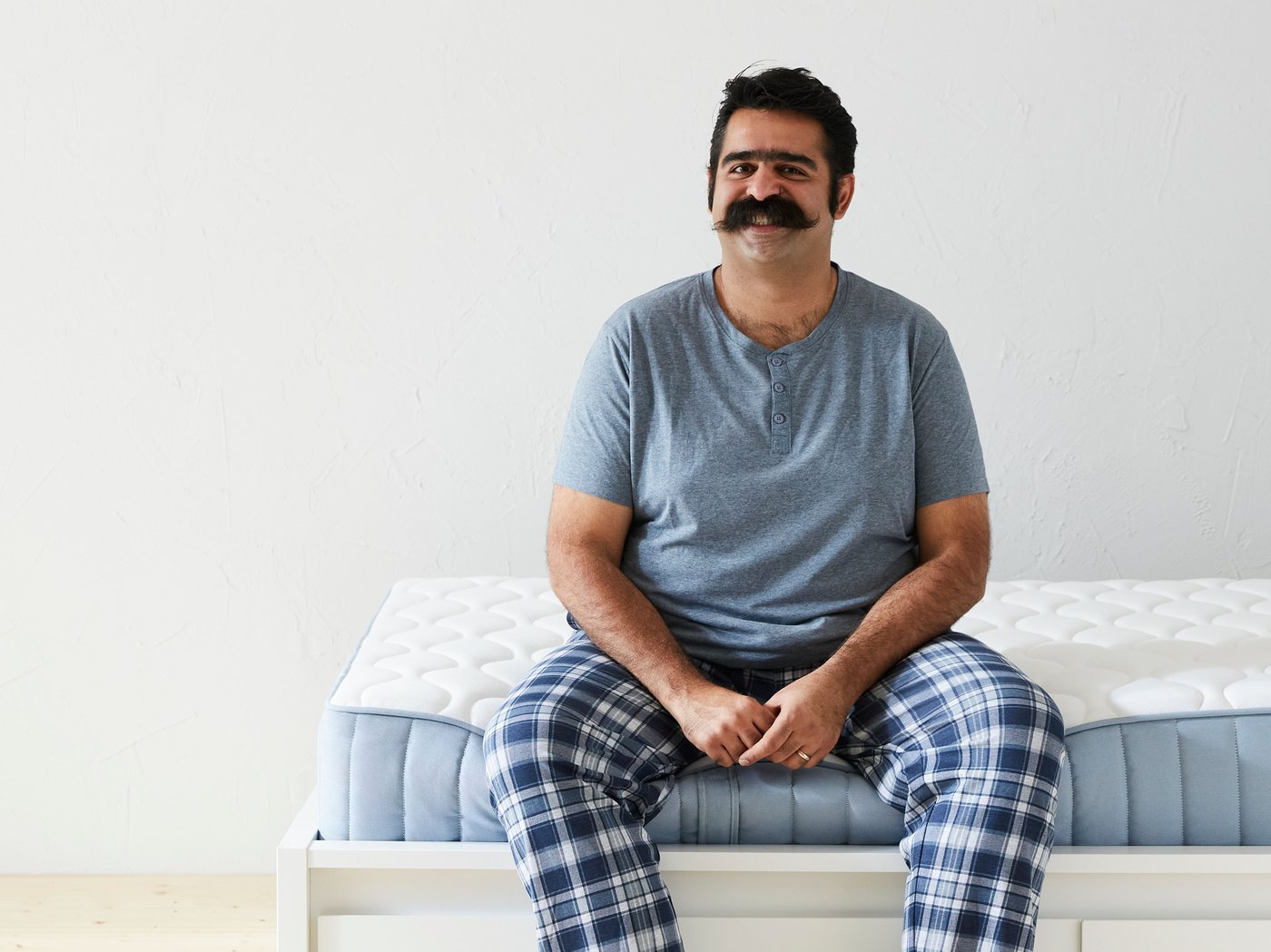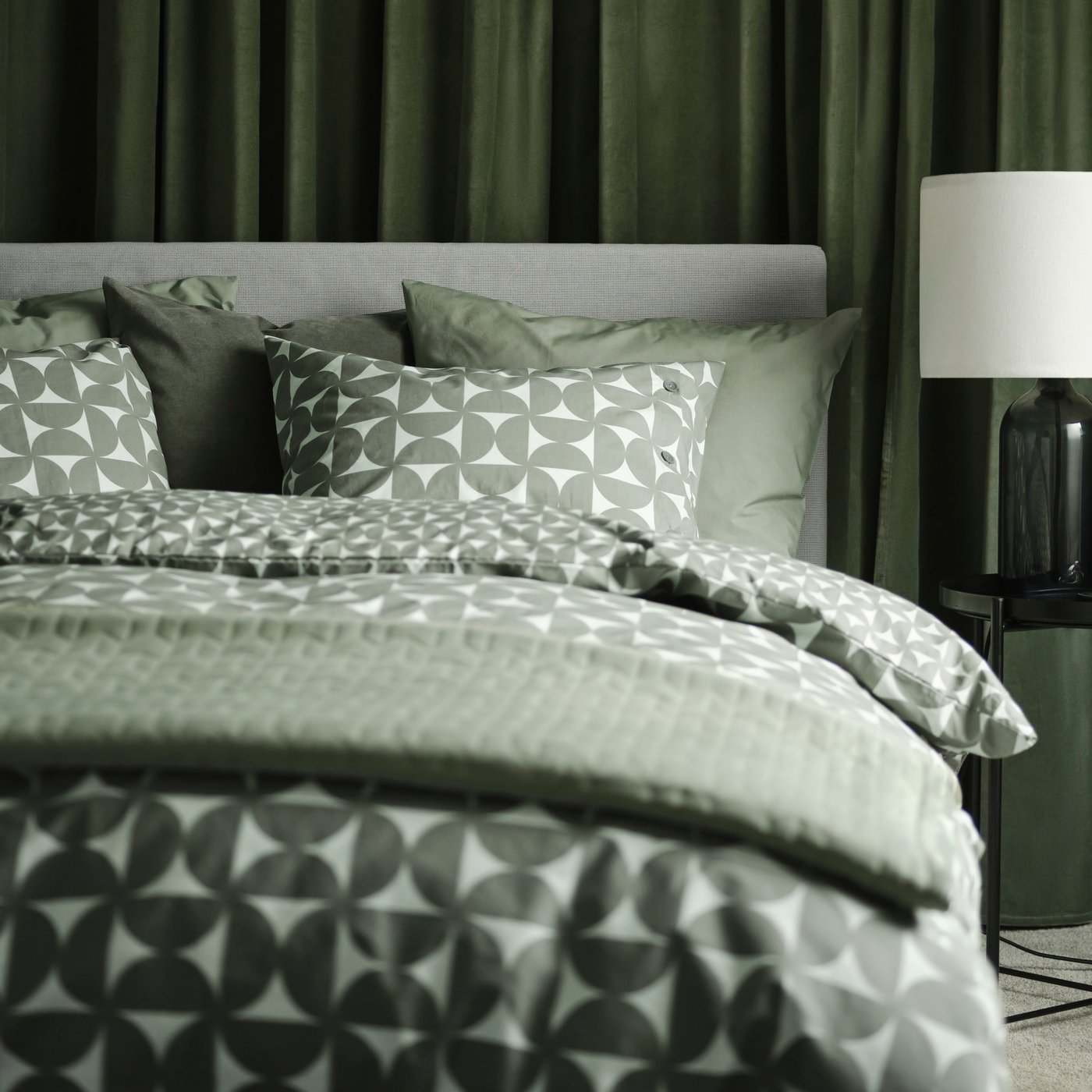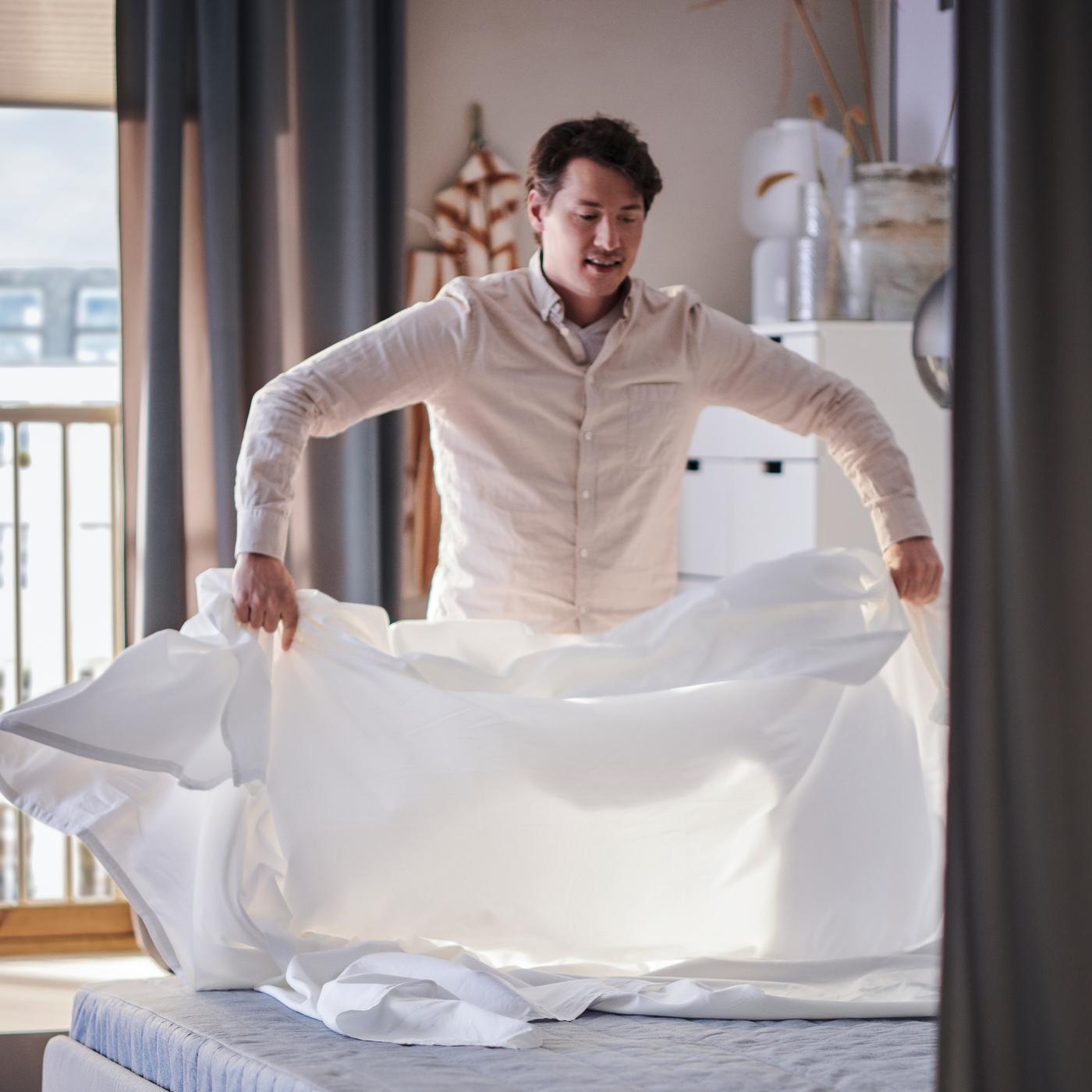How to choose the best mattress
There is a wide range of mattress types in Malaysia because everyone’s body is different, especially in a multiracial country like ours. Thus, to help you narrow down your choices, we’ve put together some tips on choosing mattress materials, firmness, and size. This guide should help you decide which mattress to buy before you head to a store like IKEA to try them out. (Also, spend at least 5 minutes testing each one with a proper pillow that matches your sleeping position for the best results!)


1. Foam vs spring mattress
A mattress can be made from springs or foam, designed to support your body, align your spine, and relieve pressure, which is important for those with back pain. Both types come in various sizes and firmness levels, and some even have comfort zones that prevent certain parts of your body from sinking.
Spring mattresses: Bouncy
Ideal for warm sleepers, spring bed mattresses offer strong support and allow air to circulate, making them a great choice in Malaysia’s humid climate. Spring mattresses use metal coils to support weight evenly so that there’s no extra pressure on any part of your body. They usually have a layer of standard foam or natural latex on top for added comfort.
But what is a 'pocket spring mattress' Typically, spring mattresses use only pocket springs or Bonnell springs. Pocket springs are wrapped in individual covers and work independently while Bonnell springs are all connected.
Spring mattress is suitable for:
- Sharing a bed: Pocket springs are recommended over Bonnell springs to minimise the impact of your sleep partner’s movements.
- Comfortable temperatures at night: Spring mattresses allow better breathability to keep you cool all night long in Malaysia's warm & humid climate.
Good to know:
A spring mattress can be almost like a complete bed. A wooden base spring mattress is a spring mattress built inside a self-supporting frame, often made of pine. Most have a double layer of springs. If you're looking for the best of both worlds, hybrid mattresses combine pocket springs with various types of foam for sturdy, pressure-relieving support.
Foam mattresses: Cosy Hug
Foam mattresses combine different foams to provide good support during your sleep, especially for those seeking relief from back pain. The foam moulds to your body’s shape, offering pressure relief and support. Typically, foam mattresses use memory foam and standard foam (polyurethane).
Memory foam mattress is dense yet elastic and mouldable, especially good for those who need targeted support for joint pain or back pain, improving blood circulation to muscles and skin, which enables you to fully relax your body when you're lying down. Meanwhile, standard foam creates a stable sleeping environment and can be made to feel very firm or soft. Alternatively, high-resilience foam is a bit more durable than standard foam, and it recovers its original shape quickly.
Foam mattress is suitable for:
- Sharing a bed: Foam mattresses absorb movements, so you won’t be disturbed by your partner.
- Feeling too cold at night: Foam mattresses have higher density, so they tend to feel warmer as they adhere to your body more closely, especially when you enjoy sleeping in a very cold air-conditioned room.
2. Firm vs medium firm mattress
The best mattress firmness for you depends on your sleeping position and body weight, as both factors play a crucial role in determining the support and comfort required. Choosing the right firmness can help you maintain proper spinal alignment and achieve good quality sleep every night.
Softer mattresses are best for
Side sleepers under 85 kg:
Shapes to the shoulders and hips, especially with comfort zones. (Tip: Pair with a high pillow.)
Back sleepers under 60 kg:
Prevents the neck and lower back from sinking too much, and this mattress is the best option for back pain. (Tip: Pair with a low pillow.)
Stomach sleepers under 60 kg:
Avoids stressing the spine. (Tip: Pair with a very low or no pillow.)

- Product information page
Firmer mattresses are best for
Side sleepers over 85 kg:
Shapes to shoulders and hips, especially with comfort zones. (Tip: Pair with a high pillow.)
Back sleepers over 60 kg:
Prevents neck and lower back from sinking too much. (Tip: Pair with a low pillow.)
Stomach sleepers over 60 kg:
Avoids stressing the spine. (Tip: Pair with a very low or no pillow.)
Which mattress firmness is right for you?
The right level of firmness is essential to good sleep. Here’s a quick breakdown of firmness levels to help you choose your ideal mattress type:
Soft
Soft mattresses contour to your body, letting you sink in for a cosy, cushioned feel. They’re best for lighter to medium-weight sleepers.
Medium firm
A medium-firm mattress adapts to various sleep positions, providing balanced support while keeping your spine aligned. This option works well for most people, especially side sleepers.
Firm
Firm mattresses provide solid support that follows the natural shape of your body. Ideal for heavier sleepers, a firm mattress helps maintain proper alignment and allows freedom of movement.
The ideal mattress according to your sleep style
Each of us has a unique sleep style, and whether you sleep on your back, side, or stomach, your sleep position plays a big role in finding the right mattress.
Pro Tip:
At IKEA Malaysia, you can find a range of options, from the single mattress to the double bed mattress, so you can select the right size for your needs.
Choosing a mattress based on body type
Your body type can help determine the kind of support and comfort you need from a mattress.
Broad Shoulders, wider waist – Choose a firmer mattress with comfort zones for optimal support and pressure relief.
Broad Shoulders, narrow waist – A mattress with zoned comfort that supports your shoulders and lower back is ideal.
Narrow shoulders, narrow waist – Most mattress types will work well, but look for one that supports spine alignment, like a memory foam mattress or a spring bed.
Narrow shoulder, wide waist – Your ideal mattress features comfort zones that will support your hips and maintain spine alignment.
Tip: If you’re looking for the best mattress for back pain, consider a firm or medium-firm mattress that promotes healthy spine alignment.
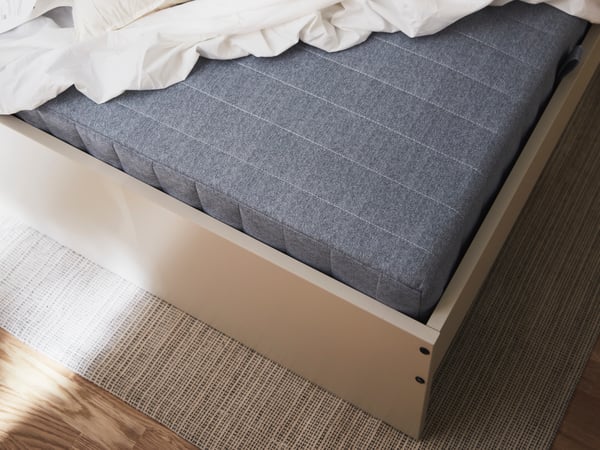
- Product information page
3. Choose the right mattress size
Make sure your chosen mattress is the right fit for your sleeping area, bed frame, and body. Start by measuring your space or existing frame and comparing it with the mattress dimensions to ensure it fits perfectly. A mattress that’s too short may leave your feet hanging off the end, while one that’s too small overall might restrict your ability to move comfortably. If you share the bed with a partner, consider their comfort and movement as well by opting for a size that provides enough space for both of you to stretch out without disturbing each other. For solo sleepers, think about your preferred sleeping style and whether you like to sprawl or stick to one side.
IKEA mattress sizes:
Single (90 cm x 200 cm)
Queen (150 cm x 200 cm)
King (180 cm x 200 cm)

- Product information page
4. Care for long-lasting mattresses
No matter which mattress you choose, a mattress protector is essential to help your mattress last longer, shielding it from dirt and stains, and maintaining freshness. Other ways to care for your mattress include vacuuming it twice a year and rotating it every six months to even out the wear. A mattress topper can also add a layer of comfort, especially with spring mattresses.
All our mattresses come with a 10-year guarantee
We are all about long-lasting comfort. That’s why we’ve spent over 50 years engineering, developing and rigorously testing our mattresses. And our 10-year guarantee means you can count on the quality of your mattress. Because your sleep is what keeps you awake at night.





